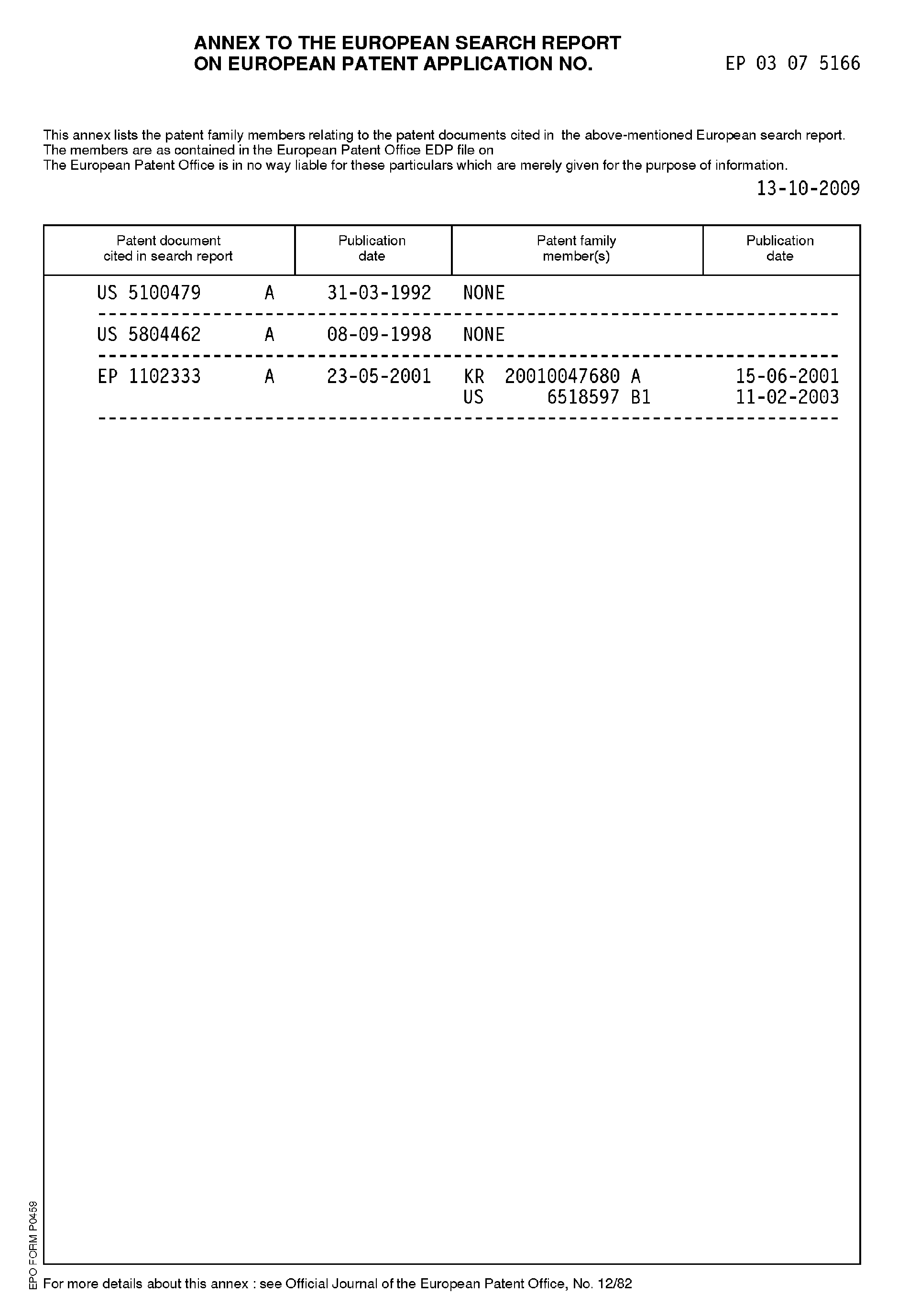| (19) |
 |
|
(11) |
EP 1 333 503 A3 |
| (12) |
EUROPEAN PATENT APPLICATION |
| (88) |
Date of publication A3: |
|
18.11.2009 Bulletin 2009/47 |
| (43) |
Date of publication A2: |
|
06.08.2003 Bulletin 2003/32 |
| (22) |
Date of filing: 17.01.2003 |
|
| (51) |
International Patent Classification (IPC):
|
|
| (84) |
Designated Contracting States: |
|
AT BE BG CH CY CZ DE DK EE ES FI FR GB GR HU IE IT LI LU MC NL PT SE SI SK TR |
|
Designated Extension States: |
|
AL LT LV MK RO |
| (30) |
Priority: |
04.02.2002 US 354589 P
|
| (71) |
Applicant: Delphi Technologies, Inc. |
|
Troy, MI 48007 (US) |
|
| (72) |
Inventors: |
|
- Chavan, Abhijeet V.
Carmel, IN 46032 (US)
- Logsdon, James H.
Kokomo, IN 46902 (US)
- Chilcott, Dan W.
Greentown, IN 46936 (US)
- Christenson, John C.
Kokomo, IN 46901 (US)
- Speck, Robert K.
Kokomo, IN 46902 (US)
|
| (74) |
Representative: Denton, Michael John |
|
Delphi France SAS
64 Avenue de la Plaine de France
ZAC Paris Nord II
B.P. 65059, Tremblay en France
95972 Roissy Charles de Gaulle Cedex
95972 Roissy Charles de Gaulle Cedex (FR) |
|
| |
|
| (54) |
Process for a monolithically-integrated micromachined sensor and circuit |
(57) A process using integrated sensor technology in which a micromachined sensing element
(12) and signal processing circuit (14) are combined on a single semiconductor substrate
(20) to form, for example, an infrared sensor (10). The process is based on modifying
a CMOS process to produce an improved layered micromachined member, such as a diaphragm
(16), after the circuit fabrication process is completed. The process generally entails
forming a circuit device (14) on a substrate (20) by processing steps that include
forming multiple dielectric layers (34,36,38,44,46) and at least one conductive layer
(40,50) on the substrate (20). The dielectric layers (34,36,38,44,46) comprise an
oxide layer (34) on a surface of the substrate (20) and at least two dielectric layers
(36,46) that are in tension, with the conductive layer (40,50) being located between
the two dielectric layers (36,46). The surface of the substrate (20) is then dry etched
to form a cavity (32) and delineate the diaphragm (16) and a frame (18) surrounding
the diaphragm (16). The dry etching step terminates at the oxide layer (34), such
that the diaphragm (16) comprises the dielectric layers (34,36,38,44,46) and conductive
layer (40,50). A special absorber (52) is preferably fabricated on the diaphragm (16)
to promote efficient absorption of incoming infrared radiation.


